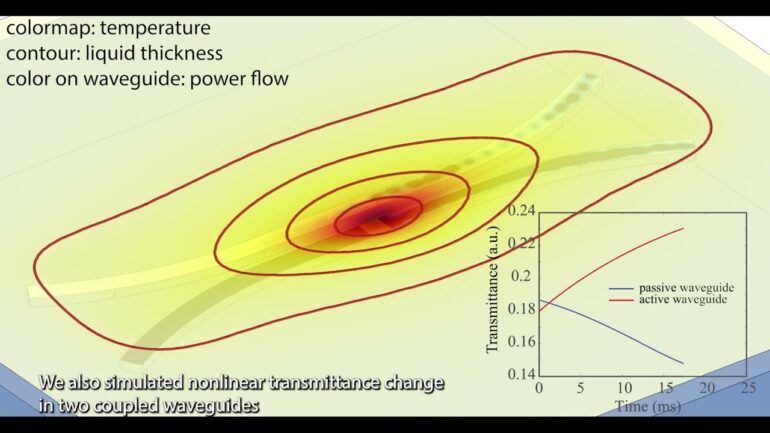Sunlight sparkling on water evokes the rich phenomena of liquid-light interaction, spanning spatial and temporal scales. While the dynamics of liquids have fascinated researchers for decades, the rise of neuromorphic computing has sparked significant efforts to develop new, unconventional computational schemes based on recurrent neural networks, crucial to supporting wide range of modern technological applications, such as pattern recognition and autonomous driving. As biological neurons also rely on a liquid environment, a convergence may be attained by bringing nanoscale nonlinear fluid dynamics to neuromorphic computing.
Researchers from University of California San Diego recently proposed a novel paradigm where liquids, which usually do not strongly interact with light on a micro- or nanoscale, support significant nonlinear response to optical fields. As reported in Advanced Photonics, the researchers predict a substantial light-liquid interaction effect through a proposed nanoscale gold patch operating as an optical heater and generating thickness changes in a liquid film covering the waveguide.
The liquid film functions as an optical memory. Here’s how it works: Light in the waveguide affects the geometry of the liquid surface, while changes in the shape of the liquid surface affect the properties of the optical mode in the waveguide, thus constituting a mutual coupling between the optical mode and the liquid film. Importantly, as the liquid geometry changes, the properties of the optical mode undergo a nonlinear response; after the optical pulse stops, the magnitude of liquid film’s deformation indicates the power of the previous optical pulse.
Remarkably, unlike traditional computational approaches, the nonlinear response and the memory reside at the same spatial region, thus suggesting realization of a compact (beyond von-Neumann) architecture where memory and computational unit occupy the same space. The researchers demonstrate that the combination of memory and nonlinearity allow the possibility of “reservoir computing” capable of performing digital and analog tasks, such as nonlinear logic gates and handwritten image recognition.
Their model also exploits another significant liquid feature: nonlocality. This enables them to predict computation enhancement that is simply not possible in solid state material platforms with limited nonlocal spatial scale. Despite nonlocality, the model does not quite achieve the levels of modern solid-state optics-based reservoir computing systems, yet the work nonetheless presents a clear roadmap for future experimental works aiming to validate the predicted effects and explore intricate coupling mechanisms of various physical processes in a liquid environment for computation.
Using multiphysics simulations to investigate coupling between light, fluid dynamics, heat transport, and surface tension effects, the researchers predict a family of novel nonlinear and nonlocal optical effects. They go a step further by indicating how these can be used to realize versatile, nonconventional computational platforms. Taking advantage of a mature silicon photonics platform, they suggest improvements to state-of-the-art liquid-assisted computation platforms by around five orders magnitude in space and at least two orders of magnitude in speed.
More information:
Chengkuan Gao et al, Thin liquid film as an optical nonlinear-nonlocal medium and memory element in integrated optofluidic reservoir computer, Advanced Photonics (2022). DOI: 10.1117/1.AP.4.4.046005
Citation:
Researchers propose neuromorphic computing with optically driven nonlinear fluid dynamics (2022, July 25)



